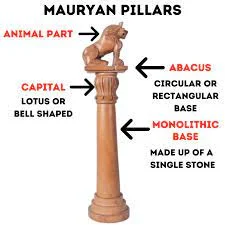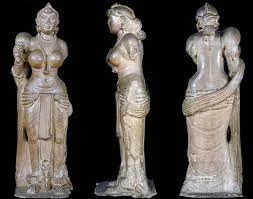Introduction
Indian sculpture considerably progressed during the Mauryan period and was largely influenced by Buddhism. However, there are also examples of a few Brahmanical Gods in the sculptural representations.

Key Features of Mauryan Sculptures
- Sculptures were used for religious expression and decoration of stupas (in Torana and Medhi).
- Mauryan Pillars: like the Lion Capital (Sarnath) and the Bull Capital (Rampurva, Bihar) were built by Ashoka.
- In Dhauli (Orissa), there is an image of an elephant carved out from a rock. It was created during Ashoka’s reign.
- This was the first time a massive animal figure had been carved out of a boulder or rock and contains edicts of Asoka (268-232 BC).[UPSC 2022]
- The Torso of a male figure found at Lohanipur (Bihar) probably represents a Jain Tirthankara.
- Large statues of Yakshas and Yakshinis were found in many places like Patna, Vidisha and Mathura.
Yakshas and Yakshinis
- They were related to all three religions: Jainism, Hinduism and Buddhism.
- These images are mostly in standing position with well-polished surfaces.
- A life-size standing sculpture of a Yakshini (made up of sandstone ) holding a Chauri (flywhisk) was found at Didarganj near modern Patna.

|
Conclusion
- Mauryan sculptures stand as timeless relics, offering invaluable insights into the artistry, spirituality, and historical context of ancient India, enriching our understanding of its cultural heritage.
![]() April 13, 2024
April 13, 2024
![]() 1857
1857
![]() 0
0
